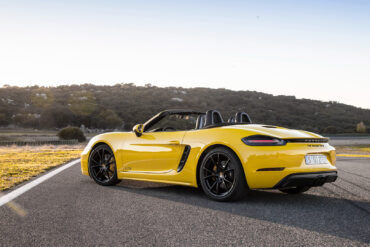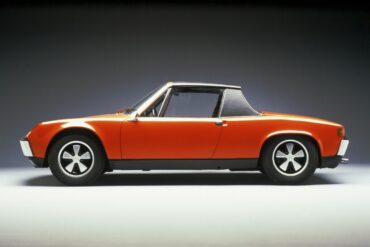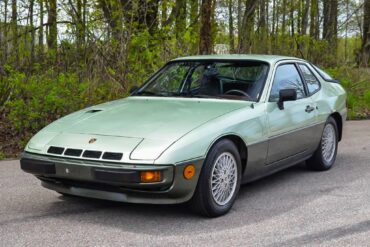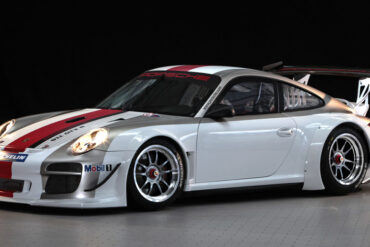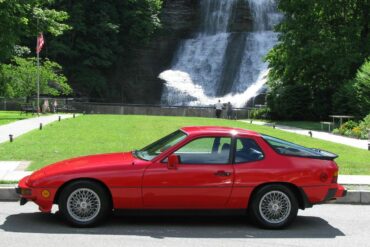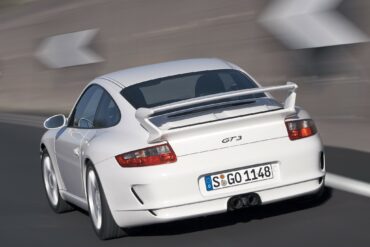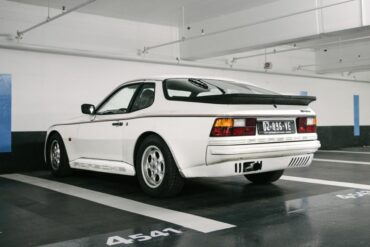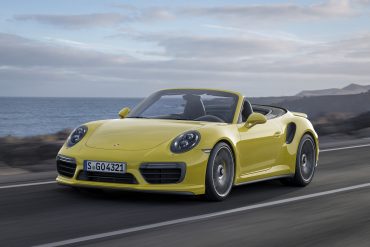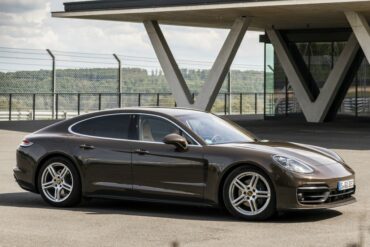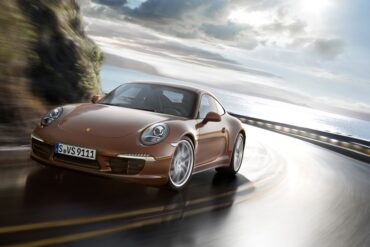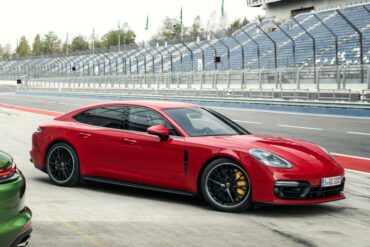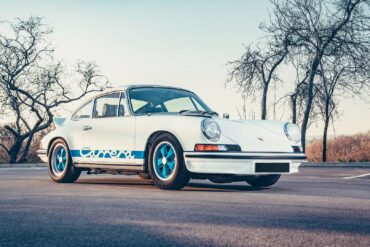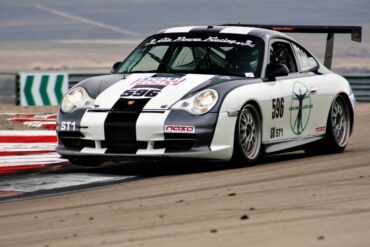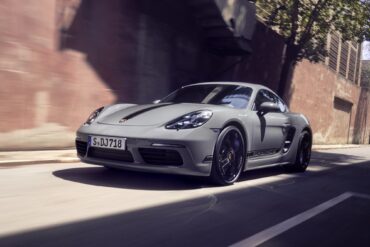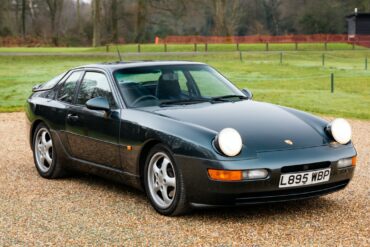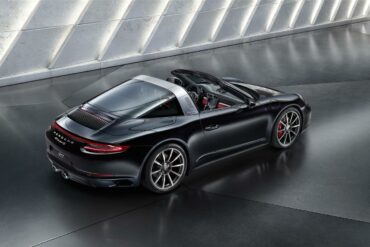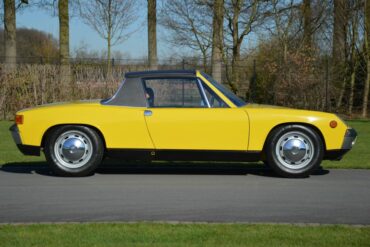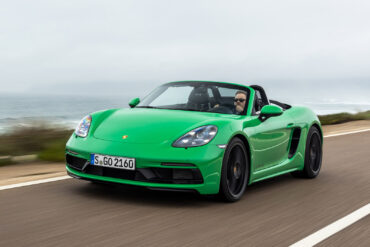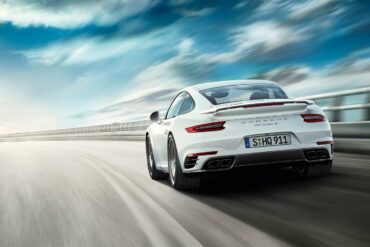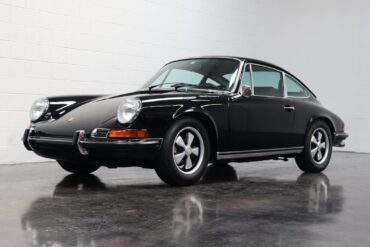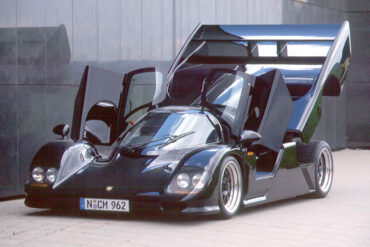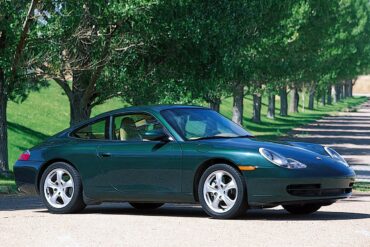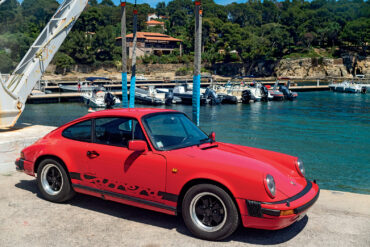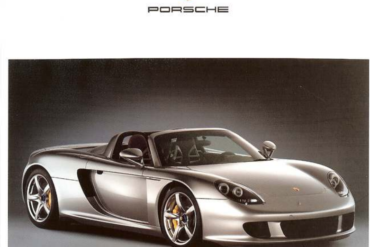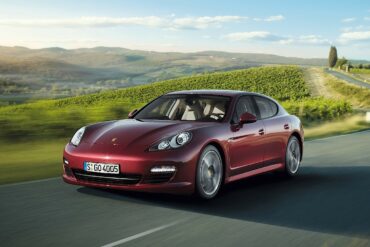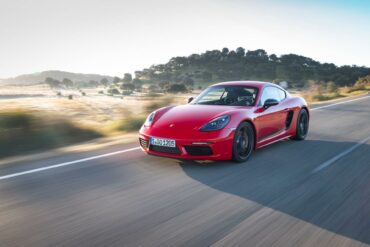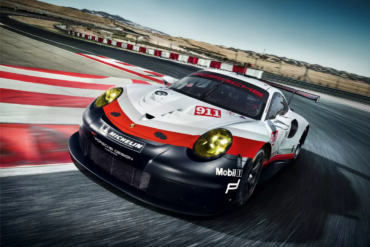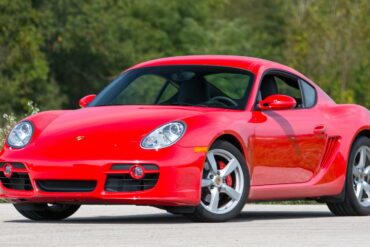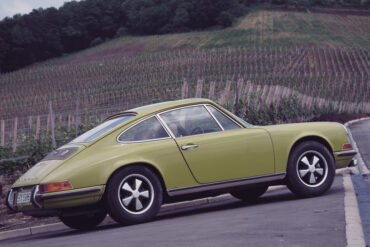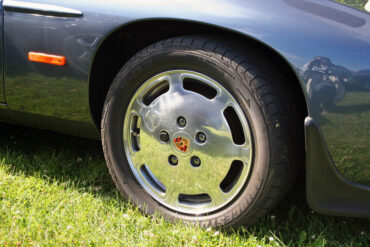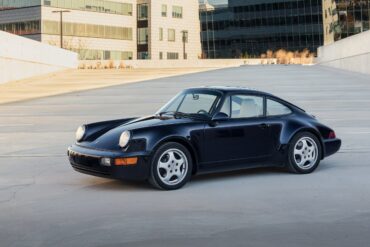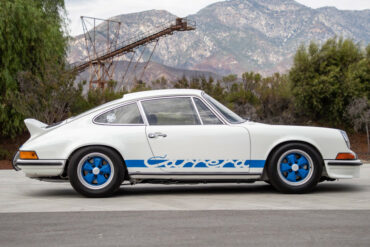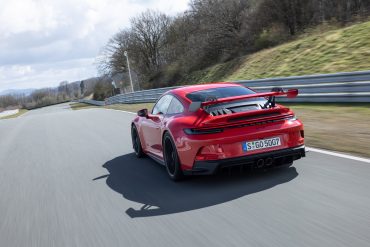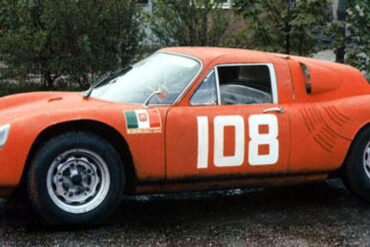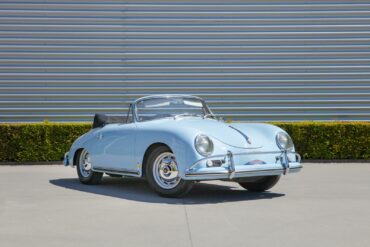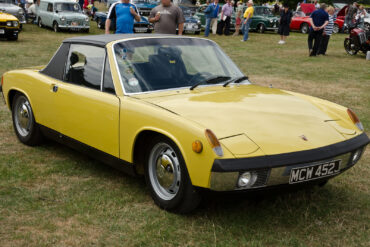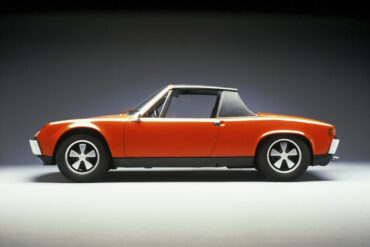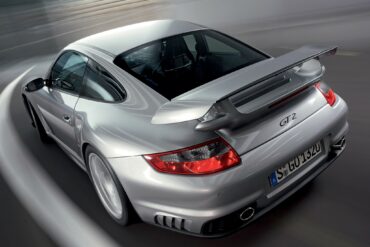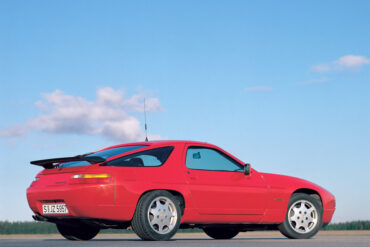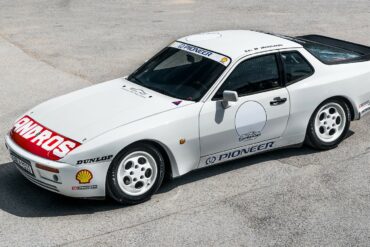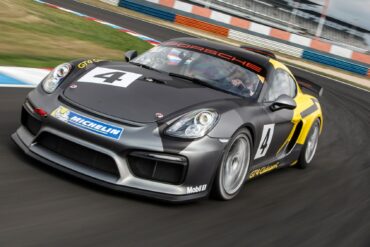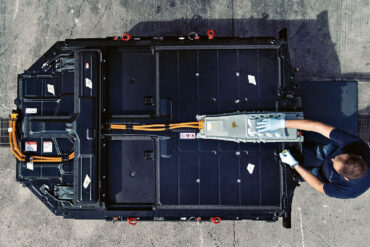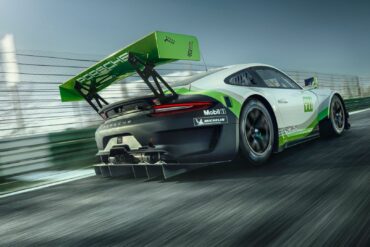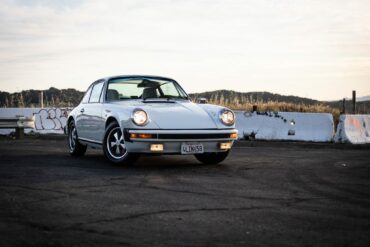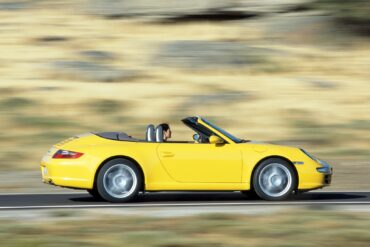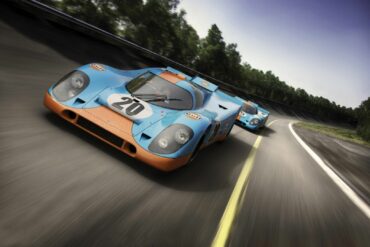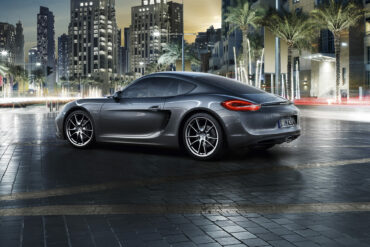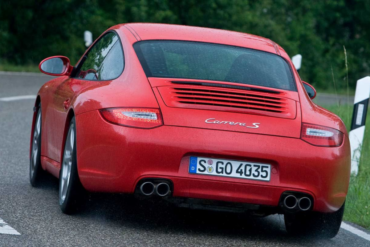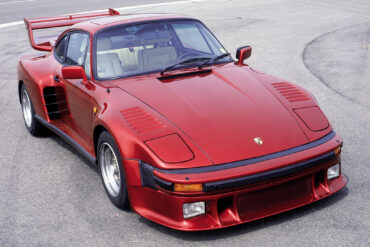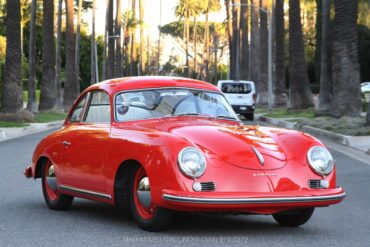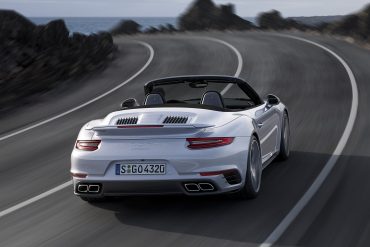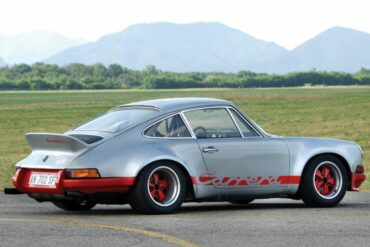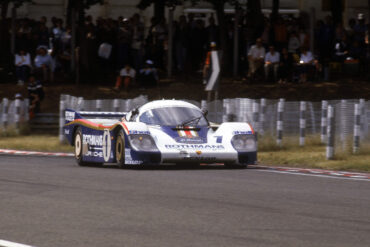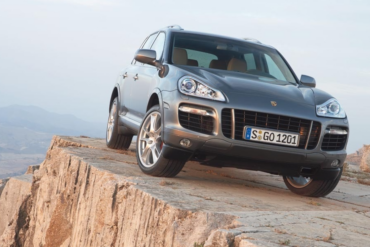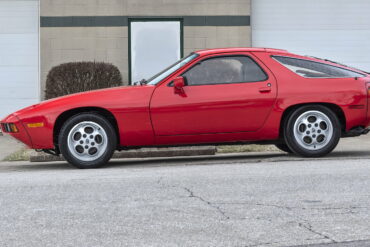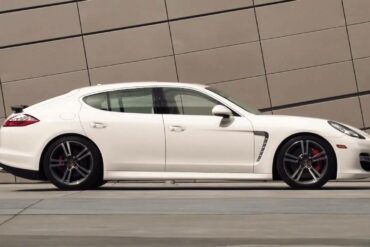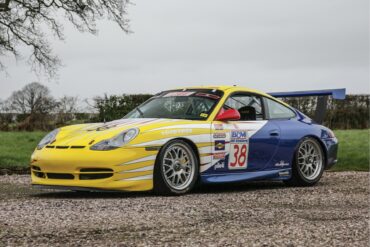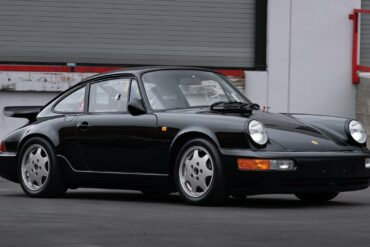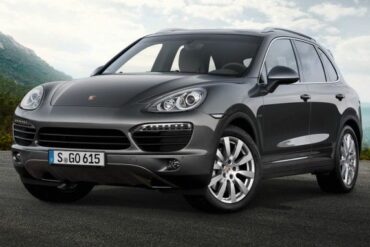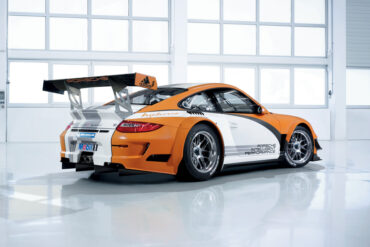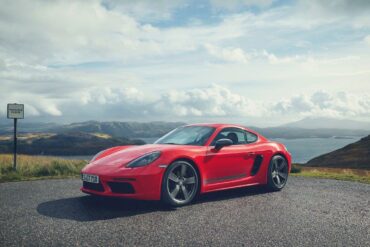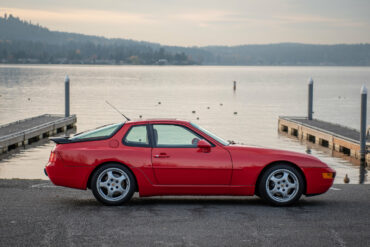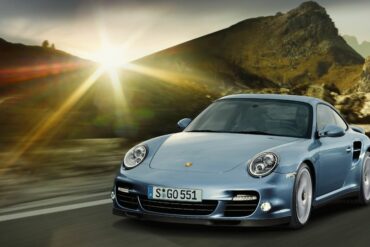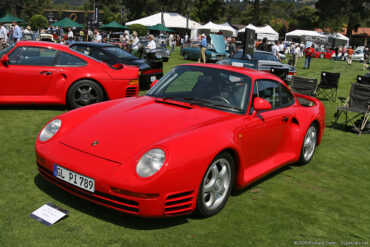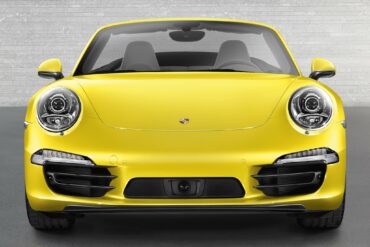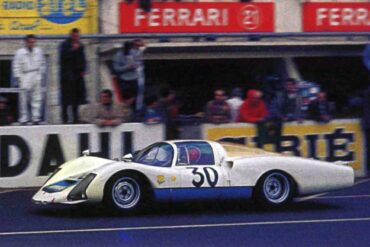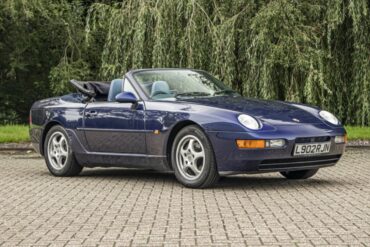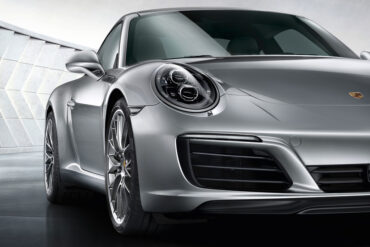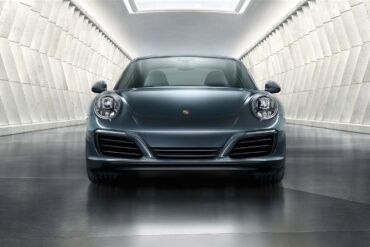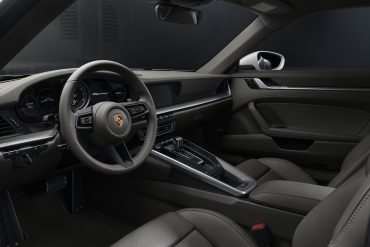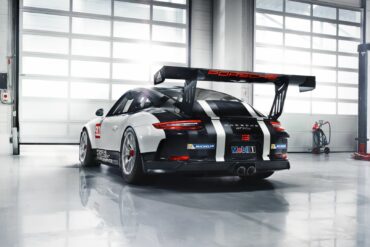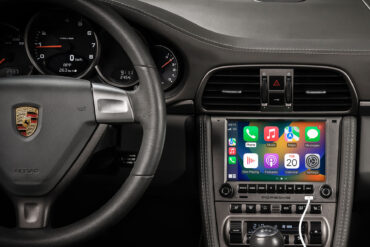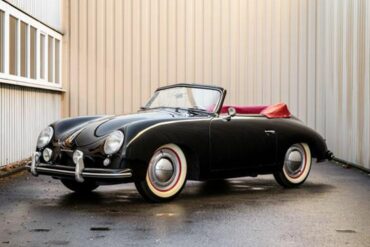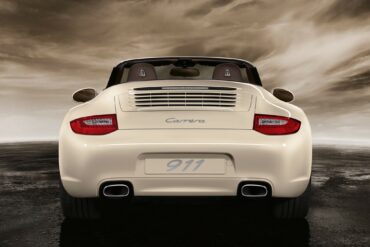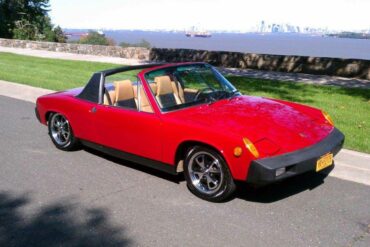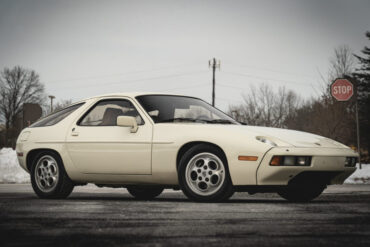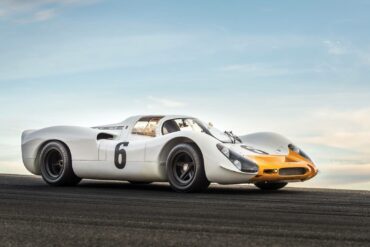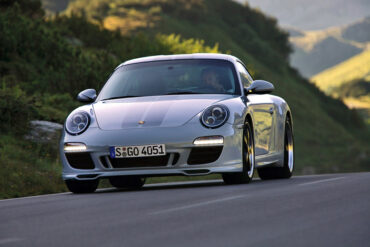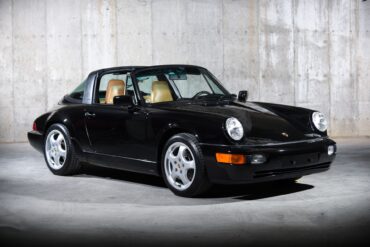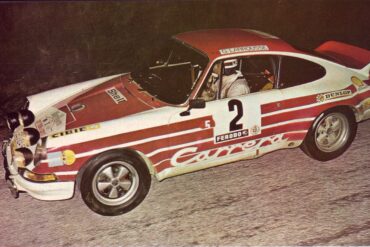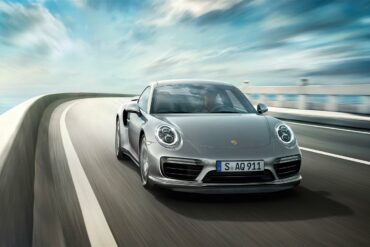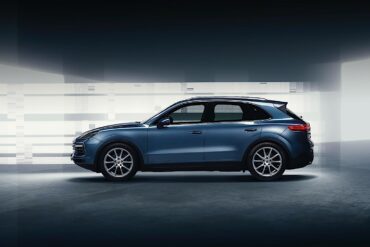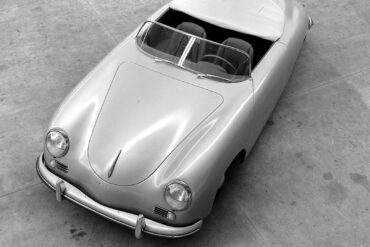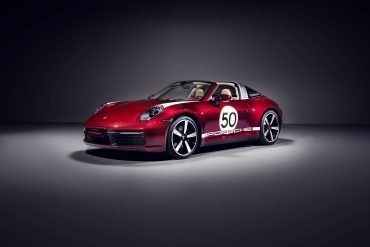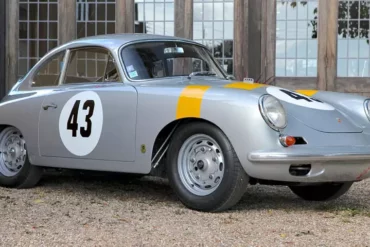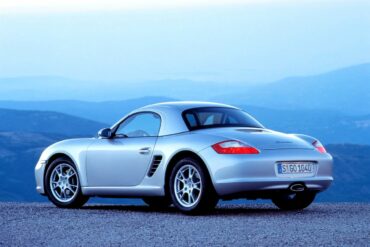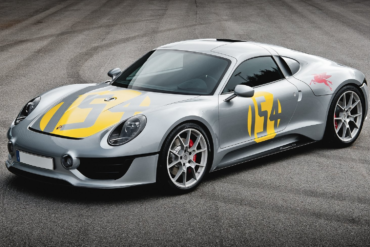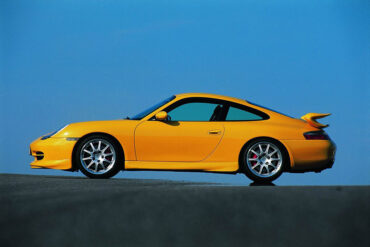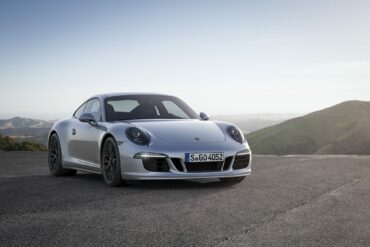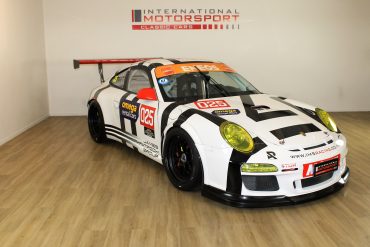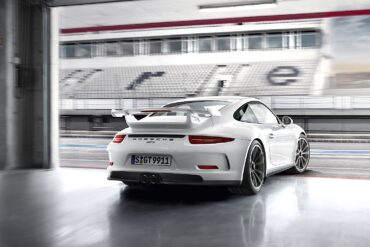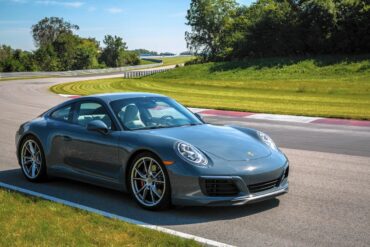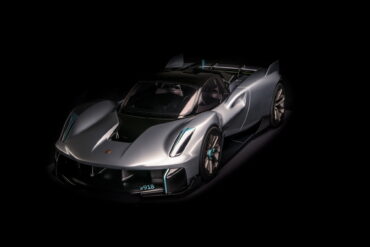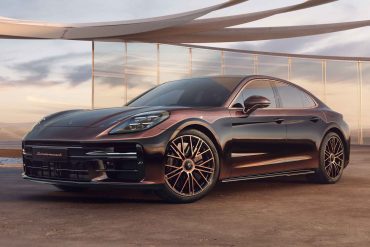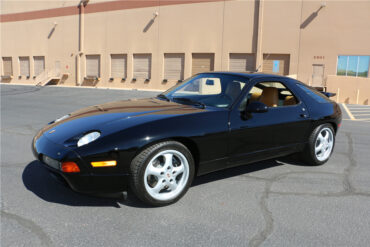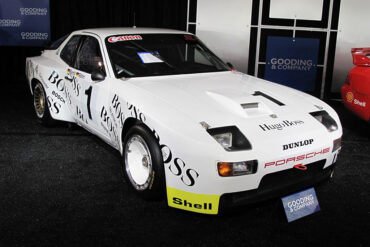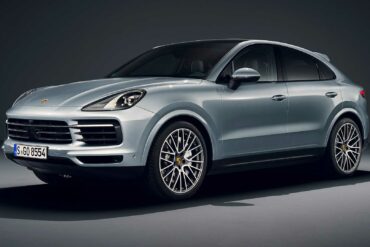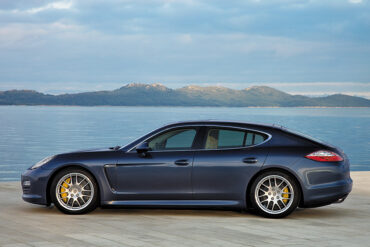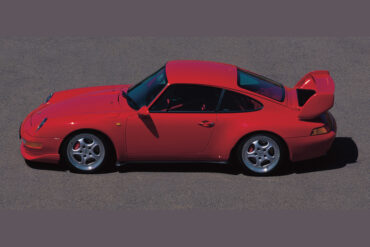Porsche Option Codes – 2018 718 Boxster Looking to decode your 2018 Porsche 718 Boxster option codes? Want to know...
Porsche Option Codes – Porsche 914 Looking to decode your Porsche 914 option codes? Want to know what those codes...
1980 Porsche 924 Turbo Technical Specifications TYPE Inline 4 INDUCTION Turbocharged COOLING Water-cooled VALVETRAIN Single overhead camshaft INJECTION Port injection...
Following the Porsche 911 GT3 Cup, Porsche AG, Stuttgart, is entering yet another racing car in the 2010 motorsport season: The 911 GT3 R will be raced in series based on the international FIA GT3 regulations, thus succeeding the 911 GT3 Cup S. The main focus in developing this new model was on even better drivability and even easier handling. The 911 GT3 R is powered by a four-litre six-cylinder boxer engine delivering maximum output of 480 bhp (353 kW) transmitted to the rear axle by a sequential six-speed dog gearbox.
Porsche Option Codes – Porsche 924 (1982 Model Year) Looking to decode your 1982 Porsche 924 option codes? Want to...
2007 Porsche 911 GT3 (997) Technical Specifications Engine Type Flat 6 Induction Normally-aspirated Cooling Water-cooled Valvetrain Double overhead camshafts Injection Port...
In spring of 1984 Rothmans cosmetic edition 944 was made, a batch of 100 numbered cars ordered by the French importer Sonauto (the subsidiary of Porsche AG) to celebrate the victorious Rothmans-sponsored Porsche 956 that had won Le Mans 24 hour race in France in 1982 and in 1983. At the time when the Rothmans 944 was sold, Rothmans-Porsche factory team decided to boycott the 1984 Le Mans race. Only 100 were produced.
This is the fastest convertible GT you can buy. The Turbo S cab gets 572 bhp (39 hp more than the base turbo cab) and 553 ft lbs (9 ft lbs more than the regular cab) of torque. With the Turbo S, the PDCC Porsche Dynamic Chassis Control hydraulic roll bars came as standard. The PCCB Porsche Ceramic Composite Brakes had been standard on the Turbo S already since the 996 generation. New options included the radar-based lane change assist and a lift system for the front axle (increased ground clearance by 1.6″/40 mm). The PCM now had a multi-touch screen like in the facelifted 991 Carrera.
Under the hood, the Porsche Panamera 4 featured a twin-turbo V6 engine, good for 330 hp. It was carried-over from the non-facelifted version. The 7-speed PDK (dual-clutch) automatic transmission was fitted as standard. For the 2021 model year, the Panamera 4 featured a redesigned front fascia, with a different bumper and lower apron. The previously optional Sport Design front end was featured as standard on the facelifted version.
2015 Porsche 911 Carrera 4 Coupe (991) Technical Specifications Engine Type Flat 6 Induction Normally-aspirated Cooling Water-cooled Valvetrain Four overhead camshafts,...
The current 971 generation Porsche Panamera is the latest model from the German marque to receive their always much anticipated, GTS treatment. For the 2019 model year, the second-gen Panamera is now a beneficiary of the badge - which actually stands for ‘Gran Turismo Sport’ - that has come to represent the pragmatist’s choice of Porsche automobile. The Panamera GTS is also now available in a long-roof wagon body style, dubbed the Sport Turismo. The Porsche Panamera GTS Sport Turismo does not have its own unique power plant, but is the beneficiary of a detuned Panamera Turbo engine instead.
1973 Porsche 911 Carrera RS 2.7 Touring Technical Specifications Built At Stuttgart, Germany Price $ $25,000 Engine 911/83 Flat-6 Position...
2003-2005 Porsche 911 GT3 Cup (996) Technical Specifications Type Racing Car Built at Germany Engine Flat-6 w/Dry Sump Lubrication Position...
Fresh colours and harmonious contrast packages characterise the new Porsche 718 Boxster Style Edition and 718 Cayman Style Edition sports cars. Available on the base model, this is a sweet package for the buyer looking to jazz up their base Cayman or Boxster and make them really special. Underlining Porsche’s commitment to ever more creative and vibrant bespoke finishes, the new models are characterized by special colors and matching contrasting elements. This is evident with the new color Ruby Star Neo, a modern interpretation of the color used on the 964 Carrera RS.
A UK-only version called "968 Sport", was offered in 1994 and 1995, and was essentially a Club Sport model (and was produced on the same production line with similar chassis numbers) with power windows, electric release boot, central locking, cloth comfort seats (different from both the standard and the Club Sport). The Sport variant also got back the two rear seats, again in the cloth material specific to the Sport.
2016 Porsche 911 Targa 4S (991.2) Technical Specifications Engine Engine layout Rear Engine Engine type Boxer, twin-turbo Cylinders 6 Valves per...
The Porsche 914 was first shown at the 1969 Frankfurt Auto Show was, as intended, a true conglomeration. The front suspension was largely derived from the 911 with some VW components, and the interior was a blend of both companies' parts bins. The initial engine offering was Volkswagen's 80-hp fuel-injected 1.7 liter flat four, while the 914/6 had a twin-carburetor 2.0-liter Porsche flat six tuned for 125 hp.
2020 Porsche 718 Boxster GTS (982) Technical Specifications Engine Type Flat 4 Induction Turbocharged Cooling Water-cooled Valvetrain Double overhead camshafts...
2018 Porsche 911 Turbo S (991.2) Technical Specifications Engine Engine layout Rear Engine Engine type Boxer, twin-turbo Cylinders 6 Valves per...
Porsche Option Codes – Porsche 911 (1971 Model Year) Looking to decode your 1971 Porsche 911 option codes? Want to...
Dauer 962 Le Mans (1994) In the late nineties, bringing prototype racecars to urban roadways was an idea that several...
2001 Porsche 911 Carrera 4 Coupe (996) Technical Specifications Engine Type Flat 6 Induction Normally-aspirated Cooling Water-cooled Valvetrain Double overhead...
1976 – 1977 Porsche 911 Carrera 3.0 Technical Specifications Type 2+2 FHC Number of doors 2 Engine 3.0 L Aircooled...
Porsche Carrera GT Sales Brochure At Porsche. we have a principle that is absolutely fundamental to our philosophy of race...
The Panamera 4 was the entry-level all-wheel-drive version for the Panamera, the long-waited four-door Porsche. The Panamera's headlights resembled those installed on the Cayenne. The profile resembled an elongated 911 or the 989 concept-car. On the front fenders, two vents were used to extract the air within the wheel-well and decrease the front-lift effect. In the back, the taillights resembled those found in the Cayman. In the back, on the trunk-lid, a retractable wing was installed. It was automatically extended at speeds over 120 kph (74.5 mph).
2021 Porsche 718 Cayman T (982) Technical Specifications Engine Type Flat 4 Induction Turbocharged Cooling Water-cooled Valvetrain Double overhead camshafts...
Two decades after the different 911 GT1 cars the mid-engined 911 is back! In order to install a proper diffuser under the rear end of the 991, the engine had to make room for it and the engine/transmission unit was rotated 180 degrees. The extended rear diffuser, a top-suspended rear wing and the new side mirrors help to increase downforce with reduced drag. The FIA rules meant no turbo was needed due to power limits, so the normally aspirated 4-litre flat-6 was taken from the 991 GT3 R.
2008 987 Porsche Cayman & Porsche Cayman S Service Schedule This maintenance service schedule checklist is ONLY for the following...
The Porsche 911E continued as the midrange 911 for the 1970 and 1971 model years, fitting between the contemporaneous 2.2L 911T and the 2.2L 911S. It produced 155 bhp and featured all the upgrades that came with C-Series production including longer wheelbase, Fuchs alloy wheels. Both the E and S model 911 had an aluminium engine-lid and aluminium bumpers. The 911 E 2.2 was once again available as either a Coupe or Targa body. For model year 1972, the 2.2L 911E was replaced by the 2.4L 911E.
Porsche 928 Wheels Below are all the Porsche 928 wheel options. Click on the table to see the full information,...
1994 Porsche 911 Carrera 4 Coupe (964) Technical Specifications Engine Type Flat 6 Induction Normally-aspirated Cooling Air/oil-cooled Valvetrain Single overhead...
Porsche Option Codes – Porsche 911 (1973 Model Year) Looking to decode your 1973 Porsche 911 option codes? Want to...
2022 Porsche 911 GT3 (992) Technical Specifications Type Aluminium horizontally opposed and naturally aspirated engine Cylinders 6 Displacement 3,996 cm³ Maximum...
The chassis number 718-046 of a 1961 718 RS 61 Coupé was used for a new car called 718 GTR in 1962.. The Coupé version was developed from this RS 61 donor and was initially fitted with a 4-cylinder engine. This car was also upgraded to an 8-cylinder F1 derived engine which produced 210 horsepower (160 kW). The car was also fitted with disc brakes. A GTR Coupé driven Jo Bonnier and Carlo Maria Abate won the 1963 Targa Florio making it three wins at the event for a 718 car.
1956 – 1957 Porsche 356A/1300 Cabriolet Technical Specifications WHAT BODY STYLE? 2 door fixed-head coupé with 2+2 seats HOW LONG?...
1970 – 1973 Porsche 914 1.7L Specifications Price $ $3,595 USD Engine 1.7 L mid-mounted flat-4 Valvetrain OHV Fuel feeding...
Porsche only built 2 914/8s. The first was a development mule that Piëch used to prove the concept of a 914/8. The second was built for Ferry Porsche as a birthday present. Both are very unique 914s still owned by Porsche and regularly shown at the museum in Stuttgart. They had a 300 HP 3.0L 908 engine and a 916 transmission, and was never registered for the street. This was a test bed and a prototype.
2008 Porsche 911 GT2 (997) Technical Specifications Engine Type Flat 6 Induction Twin-turbocharged Cooling Water-cooled Valvetrain Double overhead camshafts Injection Port...
1990 Porsche 928 GT Technical Specifications Model Year & Variant 1990 928 GT Model Year 1990 Model Variant 928 GT...
In 2015, Porsche announced the car we all thought Porsche would never build. It has been a few years since it has been released and the excitement It was the first time Porsche introduced lets the motorsports guys in Weissach sprinkle their magic on a Cayman. With components sourced from the 911 GT3, an engine carried over from a Carrera S and a tweaked and tuned chassis, brakes and aerodynamics, Porsche’s engineers did their best to produce the perfect mid-engine sports car for road and track use.
Battery Testing & Development Porsche Engineering uses state-of-the-art testing procedures for the development of electric drives, which include both real-life...
(2019-2020) Porsche 911 GT3 Cup (991.2) Technical Specifications Concept Single-seat customer race car, basis: 911 GT3 RS (991.2) Engine Water-cooled...
Porsche 911 (G-Body) Sales & Production Numbers (1974 – 1989) ...
2005 Porsche 911 Carrera Cabriolet (997) Technical Specifications Engine Type Flat 6 Induction Normally-aspirated Cooling Water-cooled Valvetrain Double overhead camshafts...
Some great work by one of our colleagues who managed to put together the chassis numbers for all the Porsche...
2013 Porsche Cayman (Base) Technical Specifications type Series Production Car released at 2012 LA Auto Show built at Stuttgart, Germany...
2008 Porsche 911 (997.1) Carrera, Carrera S, Carrera 4, Carrera 4S, Turbo Service Schedule This maintenance service schedule checklist is ONLY...
In 1983 Porsche produced a stunning one-of road car for TAG owner Mansour Ojjeh. Based on a 934 chassis, it was designed to mimic the potent 935 racecars and subsequently became the one of the first slantnoses. Both the front and rear sections were made similar to the potent 935 race car which dominated the Group 5 Championship. This silhouette series allowed radical modifications which contributed to the repositioned nose, ultra-wdie flares and extended rear bodywork.
1954 – 1955 Porsche 356/1300 Split-Window Coupe (Pre-A) Technical Specifications Type Series Production Car Production Years 1954 – 1955 Built...
2019 Porsche 911 Turbo Cabriolet (991.2) Technical Specifications Engine Engine layout Rear Engine Engine type Boxer, twin-turbo Cylinders 6 Valves per...
1973 Porsche 911 Carrera RSR 2.8 Technical Specifications Built At Stuttgart, Germany Price $ $22,500 Engine Flat 6 Valve Train...
Porsche 956 Specifications price $ $256 000 USD engine Water Cooled Flat-6 position Mid Longitudinal aspiration Twin KKK K26-3060G Turbos...
The facelift for the first generation of the Cayenne was introduced in 2007. More powerful in every respect - that is how the new generation of the Porsche Cayenne entered the market. New striking face upfront on a wide and muscular body, with headlights in brand-new design, and with broader, even more powerful-looking wheel arches. The Turbo model 957, featuring a larger 4.8-L engine with 49 hp more power, 0–60 mph time of just 4.9 seconds.
1979 Porsche 928 Technical Specifications The Porsche Model 928 was launched in 1977 and was powered by a water-cooled V-8...
Porsche Option Codes – Porsche Panamera (2011 Model Year) Looking to decode your 2011 Porsche Panamera option codes? Want to...
The original 1973 Carrera RS was available in Europe but not in the USA. Porsche decided to build the 1993 Carrera RS both to European spec and a limited number in compliance with US regulations. These US spec cars were assigned the name “RS America”. The intent was to create a basic lightweight, no frills 911 with minimal luxury options. The standard US Carrera 2 brakes, engine and gearbox were used. The RS weighed 2,945 pounds so it was almost 80 pounds lighter than a standard Carrera 2.
1998 Porsche 911 GT3 Cup (996) Technical Specifications Type Racing Car Built at Germany Engine Flat-6 Displacement 3598 cc /...
Porsche Option Codes – Porsche 911 (1996 Model Year) Looking to decode your 1996 Porsche 911 option codes? Want to...
The Cayenne S diesel earns the “S” by way of a twin-turbocharged 4.2-liter diesel V-8 engine that pumps out a prodigious 382 hp and 627 lb-ft of torque. By comparison, the non-S Cayenne diesel’s 3.0-liter V-6 spits out a relatively puny 240 hp and 406 lb-ft of twist. Interestingly, the S diesel gets Porsche’s engine stop-start system standard; here in the U.S., the fuel-saving feature isn’t available on the pedestrian Cayenne diesel.
During the Geneva Motor Show, a Porsche 911 GT3 R with innovative hybrid drive is making its debut. The innovative hybrid technology featured in the car has been developed especially for racing, standing out significantly in its configuration and components from conventional hybrid systems. In this case, electrical front axle drive with two electric motors developing 60 kW each supplements the 480-bhp four-litre flat-six at the rear of the 911 GT3 R Hybrid. Instead of batteries, an electrical flywheel power generator delivers energy to the electric motors.
The Boxster 718 T was released for the 2020 model year as more sport-oriented versions of the base 718 models. As such, the T features the same 2.0-litre flat-4 engine as the base 718 but adds performance-oriented options such as Porsche's sport suspension system, the Sport Chrono package, and a limited-slip differential, along with minor cosmetic differences including special decals along the lower doors, a smaller-diameter steering wheel, door pull straps in place of standard door handles, wheels from the Porsche 992 Carrera S, and black rear badging.
Porsche Option Codes – Porsche 968 (1992 Model Year) Looking to decode your 1992 Porsche 968 option codes? Want to...
Porsche Option Codes – Porsche 911 (2011 Model Year) Looking to decode your 2011 Porsche 911 option codes? Want to...
For some context, the iconic 959 remained Porsche’s fastest production car for a cool 26 years (in its very rare S guise) before the company topped it with the 918 Spyder in 2013. Details on the 959 S are scarce; Porsche made just 29 examples of it, with the 2.8-liter flat-six engine featuring larger turbochargers and the company claiming an “official” output of 508hp and 413lb-ft of torque, over the standard 959’s 444hp. Top speed was 210mph.
2014 Porsche 911 Carrera 4S Cabriolet (991) Technical Specifications Engine Type Flat 6 Induction Normally-aspirated Cooling Water-cooled Valvetrain Four overhead camshafts,...
The 906 LH was capable of achieving 174 mph/280 km/h with its 2-litre engine (906 K: 165 mph/265 km/h). At high speed the long tail started to create lift (opposite to downforce), which made the car go fast on the straight, but was dangerous to drive. At Le Mans, the 906 LHs with their experimental bodies competed in the 2-litre prototype class.
Launched in August 1991 for the 1992 model year, the 968 was available in two body styles: a Coupe and a Cabriolet. Cabriolets came with reinforced bodyshells to compensate for the lack of a roof. Porsche quoted a weight of 1370kg for the Coupe and 1440kg for the Cabriolet. Cabriolet top speeds were slightly slower owing to their messier aerodynamics, but it was dynamically pretty impressive despite the non-coupe body.
Porsche purists might moan that the flat-six engine in the rear is no longer naturally aspirated, but with more power and torque, improved efficiency and some advanced interior tech giving this 911 an even bigger breadth of ability than before, this facelifted 991-generation model carries on where the old car left off. Sure, it’s lost a touch of that high rev zing from the old car, but if you add the sports exhaust, the bark from the engine inside and out is still intoxicating. And so is the speed. The 991.2 Carrera S is absolutely amazing on both road and track and still the best sports car around.
2018 Porsche 911 Carrera Coupe (991.2) Technical Specifications Engine Engine layout Rear Engine Engine type Boxer, twin-turbo Cylinders 6 Valves per...
2021 Porsche 911 Carrera 4 (992) Technical Specifications Engine layout Rear Engine Engine type Boxer, twin-turbo Cylinders 6 Valves per cylinder...
(2016-2020) Porsche 911 GT3 Cup (991.2) Technical Specifications Concept Single-seater production-based race car Base model: 911 GT3 Engine Aluminium six-cylinder...
Porsche Classic offers new infotainment systems: Since 2020, Porsche Classic has offered two infotainment systems for many of the brand’s...
1953 – 1955 Porsche 356/1500 Super Cabriolet (Pre-A) Technical Specifications Type Series Production Car Production Years 1953 – 1955 Built...
2011 Porsche 911 Carrera Cabriolet (997.2) Technical Specifications Engine Type Flat 6 Induction Normally-aspirated Cooling Water-cooled Valvetrain Double overhead camshafts...
1974-1975 Porsche 914 1.8L Specifications Engine 1.8 L Flat 4 Induction Normally-aspirated Cooling Air/oil-cooled Valvetrain Pushrod-actuated overhead valves Injection Port...
Porsche Option Codes – Porsche 928 (1981 Model Year) Looking to decode your 1981 Porsche 928 option codes? Want to...
The Porsche 908/01 K Coupé was basically a 907 K with the new 3-litre flat-8. “K” in the designation stands for Kurz which is “short” in German, meaning the car had short-tail body compared to the 908 LH (“langheck”, long-tail). Although 907 and 908 were similar, there was a visual difference - the 907 had symmetrical front openings and the 908/01 K had asymmetrical. The 908/01 K debuted on May 19 at the Nürburgring 1000 km race and won it outright.
The 997 Sport Classic is a limited edition version of the 997.2 Carrera S coupé inspired by the 1973 Carrera RS 2.7. The engine is rated at 413 PS (304 kW; 407 hp) and features a newly developed resonance intake manifold with 6 vacuum-controlled switching flaps. It includes a 6-speed manual transmission, double-dome roof (informally called double bubble roof), 44 mm (1.7 in) wider rear fenders, SportDesign front apron with a front spoiler and a fixed 'duck tail' rear wing. Only 256 were made.
Porsche Option Codes – Porsche 911 (1991 Model Year) Looking to decode your 1991 Porsche 911 option codes? Want to...
When the idea came up of producing a series of race cars for the mainly-amateur racers who drove such GT...
2018 Porsche 911 Turbo Coupe (991.2) Technical Specifications Engine Engine layout Rear Engine Engine type Boxer, twin-turbo Cylinders 6 Valves per...
The 434-hp Cayenne S goes from 0 - 60 mph in just 4.2 seconds. Its twin-turbocharged 2.9-liter V-6 helps it to crush the quarter-mile in just 12.8 seconds. Perhaps even more impressive is that the on the optional 21-inch Pirelli P Zero summer tires, the Porsche has a 0.93 g of cornering grip. This is basically a sports car in an SUV body. The Cayenne's dynamic excellence is unmatched in the segment. Easily the best SUV on sale today.
Let’s face it, the Porsche 911 was the most successful model produced by Porsche in the 20th century, and it...
The Porsche 911 Targa 4S Heritage Design Edition showcases what is possible with Porsche's Exclusive Manufaktur program and what to expect from Porsche's Heritage Design Strategy. Inspired by the 356 and previous generations of the 911, Porsche's Heritage Design Strategy is bringing period-correct design cues into the current 992 generation 911. Cherry Metallic is the stunning color. Limited to just 992 units globally.
Around 20 Super 90 Coupes were ordered with the lightweight GT package for racing. They used aluminum panels, a lightweight interior and plexiglas windows to shed over 200 lbs off the standard production coupe. Inside the car came equipped with a roll bar, leather-strap window lifts and speedster seats. Aluminum exterior panels included the doors, hood, rear deck lid.
2005 Porsche Boxster Technical Specifications Engine Type Flat 6 Induction Normally-aspirated Cooling Water-cooled Valvetrain Double overhead camshafts Injection Port injection...
This extreme road sports car based on the Porsche Boxster is reminiscent of the groundbreaking Porsche 550 racing coupé that started in 1953 at the 24 Hours of Le Mans. The front and rear bonnet open in opposite directions and fuel is supplied via a central nozzle at the front. At the rear is an eight-cylinder engine with excessive sound development.
The GT3 was based on the standard 996 Carrera, but was stripped of a great deal of equipment for weight savings, featuring stiffer, adjustable suspension and upgraded brakes. The GT3 used the bodyshell of the four-wheel-drive Carrera 4, which incorporated additional front-end stiffening. It featured a naturally aspirated 3.6-litre flat-six engine generating a maximum power output of 360 bhp @ 7200 rpm and torque of 273 ft lbs @ 5000 rpm. This engine was shared with the 996 Turbo and was a derivative of the engine developed for the 911 GT1 race car.
991.1 Porsche 911 Carrera GTS (Ultimate Guide) The GTS is the fastest, most athletic model in the 911 Carrera line...
2009 Porsche 911 GT3 Cup (997) Technical Specifications Engine Boxer-6 w/Dry Sump Lubrication Fuel Feed Multi-point, Sequential Injection Bore 76.4 mm /...
2014 Porsche 911 GT3 (991) Technical Specifications type Series Production Car released at 2013 Geneva Motor Show built at Stuttgart, Germany...
2018 Porsche 911 Carrera 4S (991.2) Technical Specifications Engine layout Rear Engine Engine type Boxer, twin-turbo Cylinders 6 Valves per cylinder...
The Porsche Vision 918 RS is a supercar concept, designed and built by Porsche in 2019, to preview what essentially could be the next generation of a trackday, street-legal Porsche 918 if it were still in production. Some of the design elements, none of which bear resemblance to the original Porsche 918, include sharp and soft creases and large air intakes, three fins on the widened rear fenders and roof.
The third generation of the Panamera is presented in a unique form. Alongside this completely redeveloped model, Porsche is unveiling...
Porsche 928 Spare Parts Catalogs (1992 – 1995 Model Year) These official Porsche PET Diagrams and codes for the Porsche...
In 1981 Porsche developed two 944 prototypes to succeed the 924 GTPs which raced the 1980 24 Hours of Le Mans. To coincide with the release of the 944 in fall of 1981, Porsche prepared a GTP version to promote the car before the launch. The GTP was equipped with a special Type 949 cylinder block with dry sump lubrication, KKK K28 turbocharger and an air-to-air intercooler.
The 434-hp Cayenne S goes from 0 - 60 mph in just 4.2 seconds, same as the SUV. In fact, the Coupe and SUV share everything from engines to suspension components to interior trimmings and onboard tech, with only a sloping roofline setting them apart. Our advice. If you want less practicality with a cool fastback roofline, the Porsche Cayenne S coupe is a more stylish version of the Cayenne S. A great all rounder.
For the drivetrain, Porsche chose Cayenne as an inspiration model installing the 4.8-liter V8 engine under the hood. For the Panamera 4S, it fitted the car with an all-wheel-drive system and a 7-speed automatic (PDK – double-clutch) gearbox. The 400 hp Porsche 4-door hatchback was good for a 5-second run from 0 to 100 kph (0-62 mph).
The 993 Carrera RS Clubsport, 213 of which were built to meet the FIA GT2 homologation requirements, is a race-ready, although street legal variant of the 993 Carrera RS, not to be confused with the track only 993 Carrera Cup RSR. Emphasizing its competition credentials, the 993 Carrera RS Clubsport came with a welded-in roll cage as standard, considerably increasing its rigidity, racing bucket seats, six-point safety harnesses, battery isolator switch, fire extinguisher, and a huge fixed rear wing, the latter also available on the 'base model' Carrera RS.


